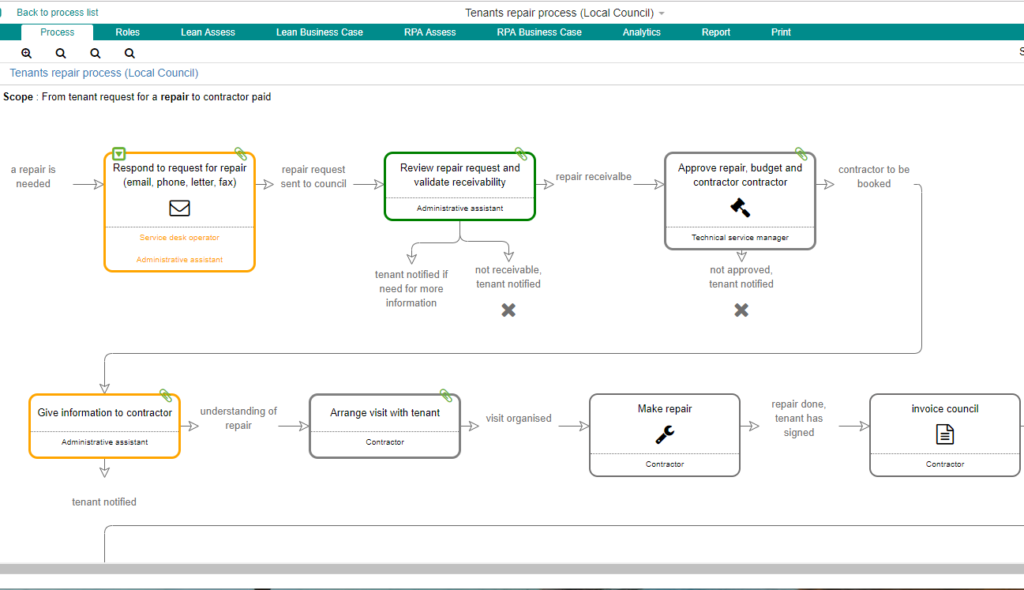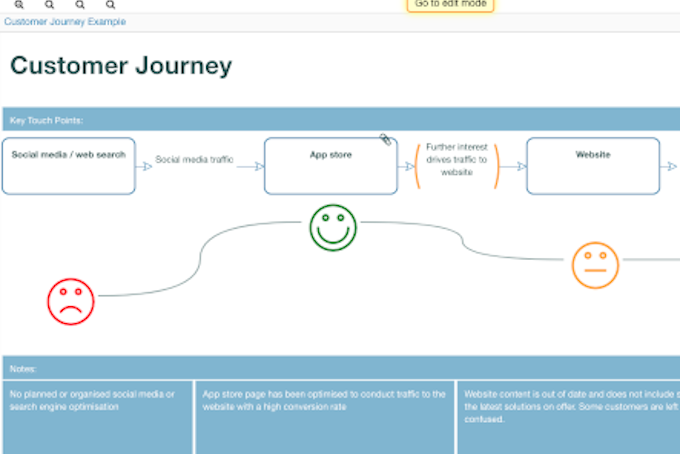Why do we map processes?
Why should you bother to map processes? Process mapping is an incredibly powerful tool for understanding what’s happening in a business. Without it your project or programme is at risk of falling apart.
Let’s start with the basics; we map processes to help understand how things work today, or to design how things should work in the future. A process map, or flow chart, provides a visual representation of a set of activities and outcomes.
Processes documented in text are very difficult to read. A visual process map makes them easy to read. It’s especially useful where a process has multiple pathways, where different things happen in parallel, or different events can trigger different sets of activities.
Typically we map processes as part of projects or programmes such as:
- Systems implementation
- Standardisation
- Compliance
- Continuous Improvement
A good process will show the key activities, the outcomes and the roles that are responsible for those activities. More detailed processes can also include; responsibilities (e.g. RACI), systems, requirements, risks, issues and control points among others.
Need to know more about Process Mapping? Read our guide here
To map processes helps us to understand how something works, or how we want it to work, but what exactly does it help us understand? What should you be looking out for when you map process? It breaks down into three things:
- Alignment
- Opportunity
- Constraints
Understanding each of these will ensure you get the most out of any process mapping exercise in the future.

Alignment
For processes to run smoothly, everyone involved must be aligned. In other words, they need to agree how it works. Mapping out the process, in a workshop, shows us whether this is indeed the case.
The process map ensures that everyone is talking the same language early on and has the same understanding. They comprehend the problems they currently face, how they describe them and any future benefits to fixing it.
It’s vital to get alignment early, get everyone onboard, and keep everyone aligned by referring back to the processes throughout the project.
Opportunity
Looking at any process is a chance to improve it. It could be reducing cost, removing unnecessary steps, simplifying, reducing risk, speeding it up or any number of other things. When subject matter experts get together to map out a process, and create that common language, it is much easier to talk about improvements.
Therefore the team needs to ask itself what the opportunities for improvement are. These could be general, such as simply removing waste from the process. Or they could be more focused on something specific like automating the process.
In large and strategic change programmes, opportunities should be looked at through the lens of the programme objectives. What improvements can be made to help achieve the goals of the programme?
Constraints
Whatever change you intend to make must be made within the constraints of the business. Some constraints will be more obvious than others, for example, time, budget and resources. It is process mapping, and the discussion around the process, that helps to reveal the hidden constraints that could trip the project up later on.
These could be anything that prevents the change being a success if not managed correctly. Issues and risks are the most common. A change may be held up simply if standards and compliance requirements impact an individual step. In process mapping workshops you discuss the non functional requirements such as security or usability requirements which are essential to success.

Summary
Process mapping, and process discovery, are the key enablers to change of any kind, whether implementing standard ways of working or completely transforming how things get done. Process mapping ensures that you get alignment among the team, identify the opportunities for improvement and understand the constraints that could prevent you from achieving the desired outcome. Make sure with any process discovery session you have considered these three dimensions effectively before moving on.
Do you need to map and/or analyse business processes? Why not take a free trial of Skore’s powerfully simple process mapping, analysis and improvement software today…
